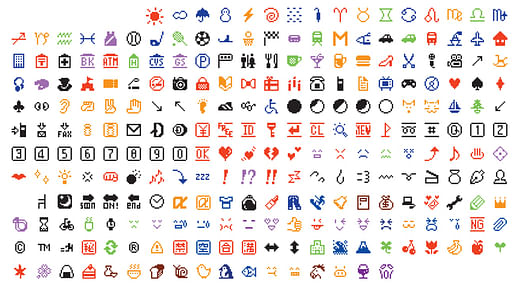
Architecture culture, while impossible to pin down precisely, tracks its course roughly with trends in starchitecture, academia, and global politics. It is the substance that wherever you practice, teach or write, provides some kind of reference point for identifying with being "an architect". While this includes bigger events and shows that draw international attention, it's also a matter of the images and media that inflect the discourse.
Here are some of 2016's biggest news stories that helped shape that idea of architectural culture (presented in reverse chronological order):
Design is the center of the universe at the 3rd Istanbul Design Biennial, "Are We Human?"
Co-curated by husband-wife architecture-academia bigwigs Beatriz Colomina and Mark Wigley, the Biennial was themed around recognizing design's impact in absolutely every facet of human existence, from the mundane to the sublime. In Colomina's words: “We have to formulate this biennale as a question—a question that is not looking for a definite answer but for a multiplicity of answers. The important thing is that the questions need to be asked indefinitely—are we human?”

Original 176 emoji join MoMA's permanent collection
Emoji have exploded in recent years, and MoMA got in on the action through a licensing agreement with NTT DoCoMo, the Japanese mobile phone company responsible for the first designs. The addition is controversial for its embrace of mass media culture, harkening back to last year's grumblings over the museum's addition of "classic" arcade games like Tetris and Pac-Man.
Johnston Marklee announced as the artistic director of the 2017 Chicago Architecture Biennial
Sharon Johnston and Mark Lee, founders of the LA-based firm, will head the Biennial's 2017 iteration, taking up after Sarah Herda and Joseph Grima helmed the inaugural year. Little else is known about the 2017 Biennial or their plans for it, but Johnston Marklee did happen to be a featured participant in the 2015 Biennial.

MoMA makes all its museum exhibition archives available online
In more MoMA collection news, the museum will continually update the online archives of its actual exhibition designs, giving an invaluable historical perspective of over 3,500 architecture exhibitions from the museum's 87 year history. In 1932, MoMA was the first to establish a curatorial department exclusively for architecture.
Dispatches from the 2016 Venice Architecture Biennale
The biggest architectural event in the world was helmed by Chilean architect Alejandro Aravena, who also won 2016's Pritzker Prize. As described by our tireless reporters dispatched to Venice, the Biennale combined elements of social advocacy with Aravena's attention to architecture in contexts of conflict. It also brought up issues of political correctness, and architecture's limitations in engaging politically.

Julia Louis-Dreyfus + Terry Gross replace Kevin Spacey as AIA keynote speakers
After Kevin Spacey ducked out, Julie Louis-Dreyfus (as interviewed by Terry Gross) took over the convention's day 1 speaker spot. With little explicit relevancy to architecture, Louis-Dreyfus was nonetheless an appropriately popular celebrity pick, designed to draw attendees. Commentators took this as fodder to discuss celebrity culture in architecture, and the boundaries of who outside the profession should be invited to contribute to the discourse.
The over 1,300 slides feature work by John Lautner, Frank Lloyd Wright, Pierre Koenig, Albert Fry, and others, and came from the collections of Fritz Block and Pierre Koenig. As with MoMA archiving its exhibition designs to view online, translating and preserving such imagery as archival media evolves is essential to progressing and teaching architecture.
"The Dessau Bauhaus" documentary now available on YouTube
More in the vein of preserving and sharing architecture media, this short film by Frédéric Compain (1999) is a good intro to Walter Gropius' influence with a close look at his Dessau Bauhaus building.
China says no to "weird" architecture
At the beginning of 2016, the Chinese government declared an end to “oversized, xenocentric, weird” architecture, as well as gated communities. While the ban on gated communities stands to have a huge effect on Chinese urbanism, many focused on unpacking the definitions of "weird" architecture, and how this might curb icons of globalized architecture.
Check out more year-end wrap-ups here.
No Comments
Block this user
Are you sure you want to block this user and hide all related comments throughout the site?
Archinect
This is your first comment on Archinect. Your comment will be visible once approved.